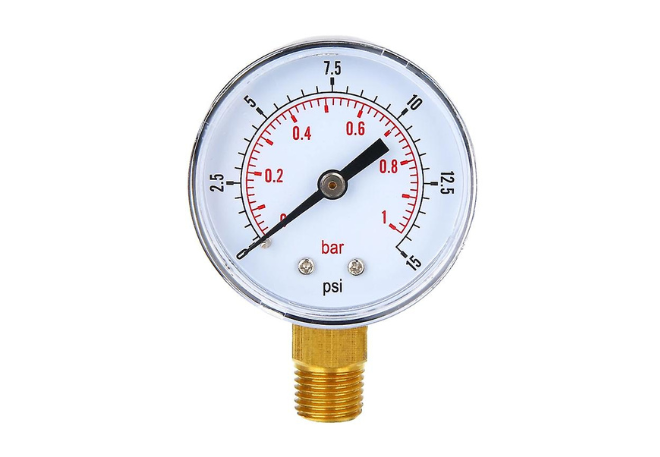What Are Tin Snips, and Why Are They Essential for Metalwork?
Tin snips, often overshadowed by more common tools like pliers, cutters and hammers, are indispensable for anyone working with sheet metal. These versatile hand tools are designed to cut through thin sheets of metal with precision and ease, making them an essential addition to any toolkit. Whether you’re a professional metalworker or a DIY enthusiast, understanding tin snips and their applications can significantly enhance your craftsmanship.
What Are Tin Snips Used For?
Tin snips are primarily used to cut and shape sheet metal. They can handle materials like:
Aluminium – Perfect for light-duty projects such as roofing and siding.
Steel – Ideal for tougher applications, such as HVAC ductwork.
Copper – Common in plumbing and decorative metalwork.
Plastic – Some tin snips can also be cut through rigid plastics.
The precision with which tin snips can produce clean cuts in various materials makes them a go-to tool for tasks that require accuracy and efficiency. This precision will give you the confidence to tackle any project with ease.
How Do Tin Snips Differ From Other Cutting Tools?
Unlike general-purpose cutters or pliers cutters, tin snips are designed specifically for metal. Here’s what sets them apart:
Specialized Blades – Made of hardened steel, these blades maintain sharpness even after repeated use.
Ergonomic Handles – Designed to provide a comfortable grip and reduce hand fatigue.
Variety of Cuts – Tin snips come in straight-cut, left-cut, and right-cut options, making it easy to navigate curves and corners.
Types of Tin Snips and Their Unique Features
Selecting the right type of tin snips for your project is crucial. Here are the main categories:
Straight-Cut Tin Snips
Best for making long, straight cuts.
Suitable for cutting flat sheets of metal.
Left-Cut Tin Snips
Designed for curved cuts to the left.
Ideal for intricate shapes and patterns.
Right-Cut Tin Snips
Perfect for making curved cuts to the right.
Useful for tasks requiring tight turns.
Aviation Snips
Equipped with compound leverage for extra cutting power.
They are often colour-coded for easy identification: red for left cuts, green for right cuts, and yellow for straight cuts.
How to Use Tin Snips Effectively
To achieve precise cuts and avoid damaging the material, follow these tips:
Mark Your Cut Line
Use a marker or scribe to outline the area you intend to cut.
Position the Blades Correctly
Align the cutting edge of the snips with the marked line for accurate results.
Apply Steady Pressure
Squeeze the handles firmly, but avoid forcing the tool through the material.
Work in Small Sections
Cut in increments to maintain control, especially when navigating curves.
Use the Right Snip for the Job
Choose left-cut or right-cut snips for curved cuts to minimise effort.
Why Are Tin Snips and Pliers Cutters a Perfect Combination?
For metalworking projects, tin snips and pliers cutters often work hand in hand:
Tin Snips handle large, flat surfaces and precise cuts.
Pliers Cutters are ideal for trimming edges, cutting wires, and making final adjustments.
By using both tools together, you can achieve professional-grade results on any project.
How to Choose the Best Tin Snips for Your Needs
When shopping for tin snips, consider these factors:
Material Compatibility
Check the tool’s specifications to ensure it can cut through the materials you’ll be working with.
Comfortable Grip
Look for ergonomic handles to reduce strain during prolonged use.
Blade Quality
Opt for snips with high-carbon or forged steel blades for durability and precision.
Cutting Capacity
Ensure the snips can handle the thickness of your material.
Brand Reputation
Trusted brands often provide better warranties and customer support.
Tips for Maintaining Your Tin Snips
Proper maintenance extends the life of your tin snips and ensures they perform optimally:
Clean After Each Use
Remove debris and metal shavings to prevent rust.
Lubricate Moving Parts
Light oil is applied to the pivot joint for smooth operation.
Sharpen the Blades
Use a sharpening stone or file to maintain a sharp edge.
Store Properly
Keep tin snips in a dry, protected environment to avoid corrosion.
Creative Uses for Tin Snips Beyond Metalwork
While tin snips are best known for cutting metal, they’re versatile enough for other tasks:
Craft Projects
Cut intricate shapes from thin metal sheets for art or DIY decorations.
Gardening
Trim small branches or cut gardening mesh.
Household Repairs
Modify plastic items or cut flexible materials for home fixes.
Why Tin Snips Are a Must-Have Tool
Tin snips are more than just cutting tools; they’re a gateway to precision and creativity in metalworking. Their ability to produce clean, accurate cuts makes them essential for projects ranging from professional installations to DIY crafts. Pair them with pliers cutters, and you’ll have the perfect toolkit to tackle any challenge with ease.
Whether you’re shaping sheet metal for a roofing project or crafting intricate designs for home decor, tin snips offer the versatility and reliability you need. Invest in a quality pair today and experience the difference they can make in your work.
.jpg)



Comments
Post a Comment